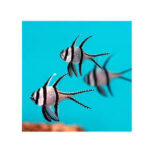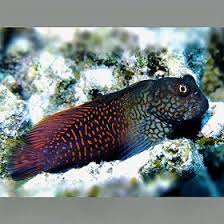Dragons have long held an important place in Chinese culture, not only as symbols of power, prosperity, and strength but also as central figures in many myths, folktales, and legends. In ancient Chinese mythology, dragons represent a variety of forces, including the forces of nature, celestial deities, and imperial power. Each type of dragon has distinct attributes, and through the ages, their symbolism has evolved. This article explores the different species of dragons in Chinese mythology and folklore, shedding light on their roles, characteristics, and the significance they hold in Chinese culture.
1. The Role of Dragons in Chinese Culture
In Chinese culture, dragons are revered as noble creatures, unlike the malevolent creatures often depicted in Western myths. They are primarily seen as symbols of good fortune, fertility, protection, and imperial power. Unlike their Western counterparts, who are often portrayed as fierce and destructive, Chinese dragons are usually viewed as benevolent beings with the ability to bring blessings and control natural elements like water and weather.
Dragons are also seen as mediators between heaven and earth, with their influence extending into the spiritual realm. Throughout Chinese history, the image of the dragon has been associated with the emperor, symbolizing his divine right to rule. However, dragons also feature prominently in the folklore and legends passed down through generations, where they often represent various cosmic forces, natural phenomena, or spiritual guardians.
2. The Different Types of Dragons in Chinese Mythology
Chinese mythology recognizes several different types of dragons, each with its own specific traits, powers, and cultural significance. These dragons range from the celestial dragons that dwell in the heavens to the earthly dragons that control rivers and seas. Below are some of the most notable dragon species found in Chinese mythology and folklore:
2.1 The Azure Dragon (Qing Long)
The Azure Dragon is one of the Four Symbols in Chinese mythology, representing the eastern direction. This dragon is often depicted as a majestic and powerful creature, embodying the forces of nature, especially storms, rainfall, and wind. It is considered the guardian of the East and is often associated with the spring season. In the Daoist tradition, the Azure Dragon represents vitality and rebirth.
This dragon is sometimes shown as a serpent-like creature with a body covered in scales, a horned head, and sharp claws. The Azure Dragon is believed to have the power to control water, often appearing in stories where it manipulates rivers, lakes, and seas to restore balance to the world. It symbolizes both the emperor’s mandate and the natural world’s harmony.
2.2 The Yellow Dragon (Huang Long)
The Yellow Dragon is a symbol of imperial power, and its appearance is often seen as a good omen. According to legend, this dragon once appeared before the Yellow Emperor (Huang Di) during his quest to unify China. The Yellow Dragon is often depicted as a majestic creature with five claws, and its appearance was said to be a sign of the emperor’s divinely granted authority to rule.
In myth, the Yellow Dragon plays a pivotal role in the creation myth. It is said that this dragon once emerged from the River Luo to present the emperor with the Luo Shu, a mystical diagram that is integral to Chinese numerology and feng shui. As a result, the Yellow Dragon is closely linked with themes of earthly governance, wisdom, and good fortune.
2.3 The Black Dragon (Xuan Long)
The Black Dragon, often associated with the North, represents one of the Four Symbols of Chinese cosmology. It is typically depicted as a water dragon that dwells in the icy rivers and lakes of the northern regions. This dragon symbolizes the winter season, a time of rest and renewal in nature. It is a powerful being capable of controlling and shaping the forces of cold and frost.
The Black Dragon is also revered for its ability to bring balance to the world by calming the chaos of nature. Its role in Chinese mythology is often that of a protector, helping to restore order when disaster strikes. This dragon is frequently connected with the divine forces that govern the natural world, maintaining the cycle of life and death.
2.4 The White Dragon (Bai Long)
The White Dragon is another important figure in Chinese mythology, and it represents the West in the Four Symbols. Though less widely recognized compared to the Azure and Yellow Dragons, the White Dragon holds significant cultural importance, especially in relation to the harvest and prosperity.
It is believed that the White Dragon is capable of bringing fertility to the land and ensuring bountiful harvests. In some legends, this dragon is portrayed as a celestial being that assists in spiritual ascension, guiding individuals toward enlightenment or immortality. Its image is often associated with the idea of purification and transformation, both in the spiritual and natural worlds.
2.5 The Lung Dragon
The Lung Dragon, sometimes referred to as the Chinese Lung, is the most widely recognized dragon in Chinese culture. Unlike the other types of dragons, the Lung Dragon is depicted as a long, serpentine creature with antler-like horns, a body covered in scales, and a pair of powerful claws. It is the most prominent dragon in Chinese folklore, often seen in imperial insignia, ceremonial objects, and traditional art.
The Lung Dragon is a water deity that rules over the seas, rivers, and rain. It is believed that the Lung Dragon can transform into a dragon king that resides at the bottom of bodies of water, such as rivers or lakes. In many folktales, the Lung Dragon has the power to grant good fortune or blessings to those who honor it, while those who disrespect it may face disastrous consequences. The Lung Dragon is also associated with monarchs and emperor worship, representing imperial power and spiritual protection.
3. Dragons in Chinese Folklore and Legends
In addition to their symbolic roles, dragons appear in a variety of folklore and legends, each with its own unique characteristics and lessons. Below are some of the most famous legends involving dragons in Chinese culture:
3.1 The Dragon’s Gate and the Carp’s Transformation
One of the most enduring myths surrounding the dragon in Chinese folklore is the story of the Dragon Gate. According to this tale, a carp swam upstream in the Yellow River, determined to reach the Dragon Gate, where a magical waterfall cascaded down from the mountain. It is said that any carp that could leap over the waterfall would transform into a dragon.
This legend is a symbol of perseverance, ambition, and transformation. The tale is often used to inspire individuals to work hard and overcome obstacles in their pursuit of success. In Chinese culture, the image of the carp jumping over the Dragon Gate is a common motif used during the Dragon Boat Festival and symbolizes achievement and personal growth.
3.2 The Dragon and the Phoenix: A Pair of Imperial Symbols
The dragon is often paired with the phoenix in Chinese mythology, representing the yin and yang of the universe. While the dragon symbolizes male power and the emperor, the phoenix represents female power and the empress. Together, the dragon and phoenix are seen as the ideal couple, embodying the harmony of the natural world and the balanced governance of an empire.
The legend of the Dragon and Phoenix is often invoked in stories of royal marriages and the ideal relationship between the emperor and empress. The two creatures are commonly depicted in traditional Chinese wedding art, representing the union of opposites and the prosperity and happiness that comes from harmony.
3.3 The Dragon King and the Flood
In Chinese folklore, the Dragon King is often depicted as the ruler of the oceans and seas. One of the most famous legends surrounding the Dragon King involves a great flood that threatens to submerge the world. In this story, the Dragon King is called upon to control the waters and bring balance to nature. However, his refusal to assist results in a series of natural disasters.
This tale highlights the dragon’s role as a powerful being capable of both creation and destruction. The story of the Dragon King emphasizes the idea that dragons must be respected and appeased, as they control the natural forces that govern the world.
4. The Enduring Symbol of the Dragon
Dragons in Chinese mythology and folklore are more than just mythical creatures; they are symbols of the forces that shape the universe, the balance of nature, and the power of the emperor. From the Azure Dragon, symbolizing vitality and power, to the Lung Dragon, embodying protection and prosperity, these mythical beings represent the strength and harmony that are vital to Chinese culture.
Through these stories and legends, dragons continue to inspire generations with their wisdom, power, and mysticism. Whether they appear as gods of water, symbols of the emperor’s authority, or mythical creatures that transform through perseverance, dragons hold a timeless place in Chinese cultural and spiritual life. As long as these stories continue to be passed down, the legacy of the dragon will remain an essential part of China’s rich mythological tradition.










